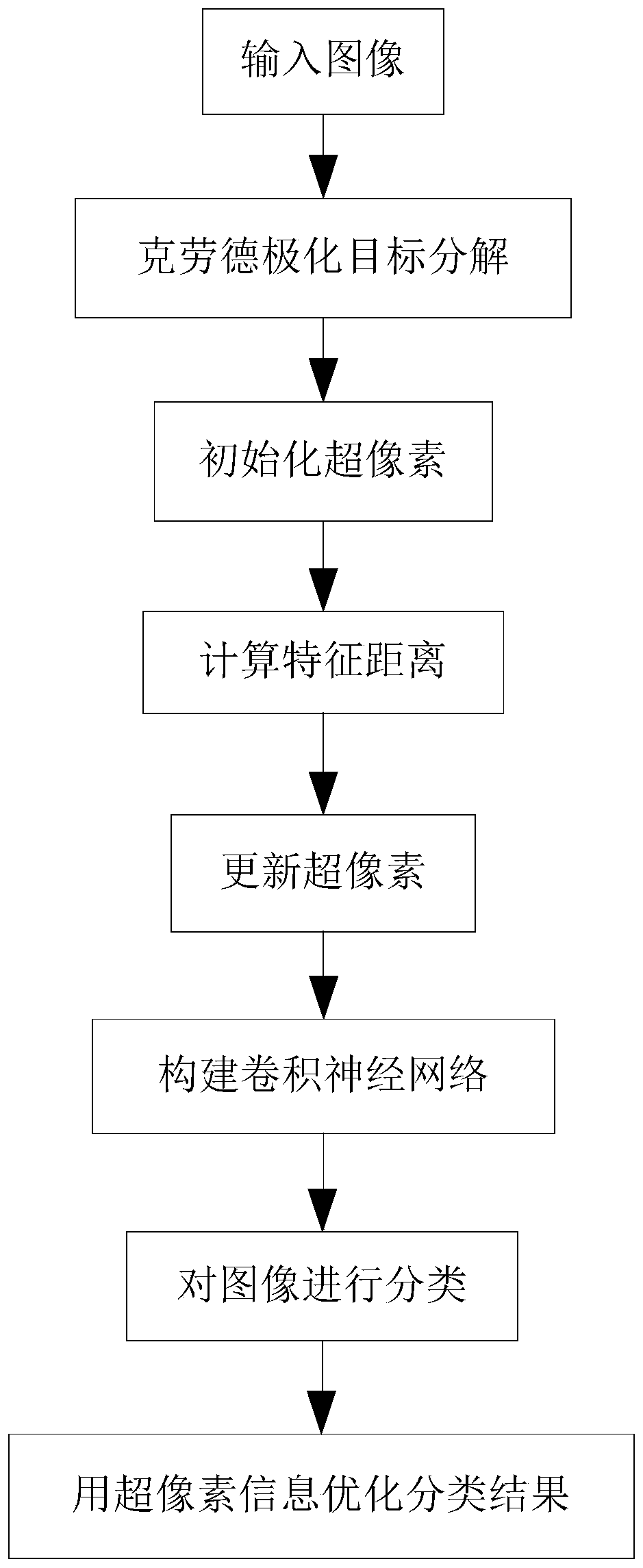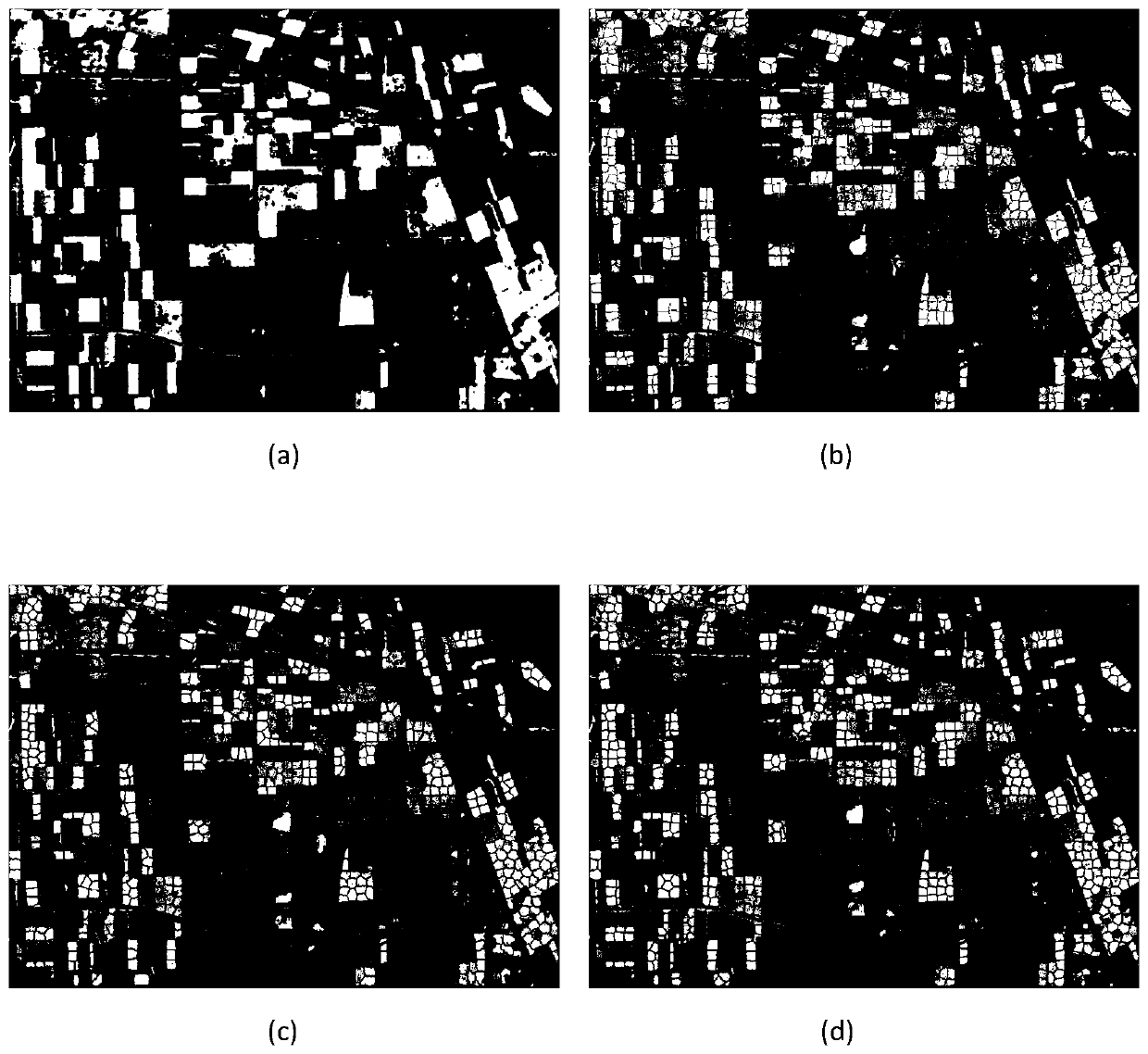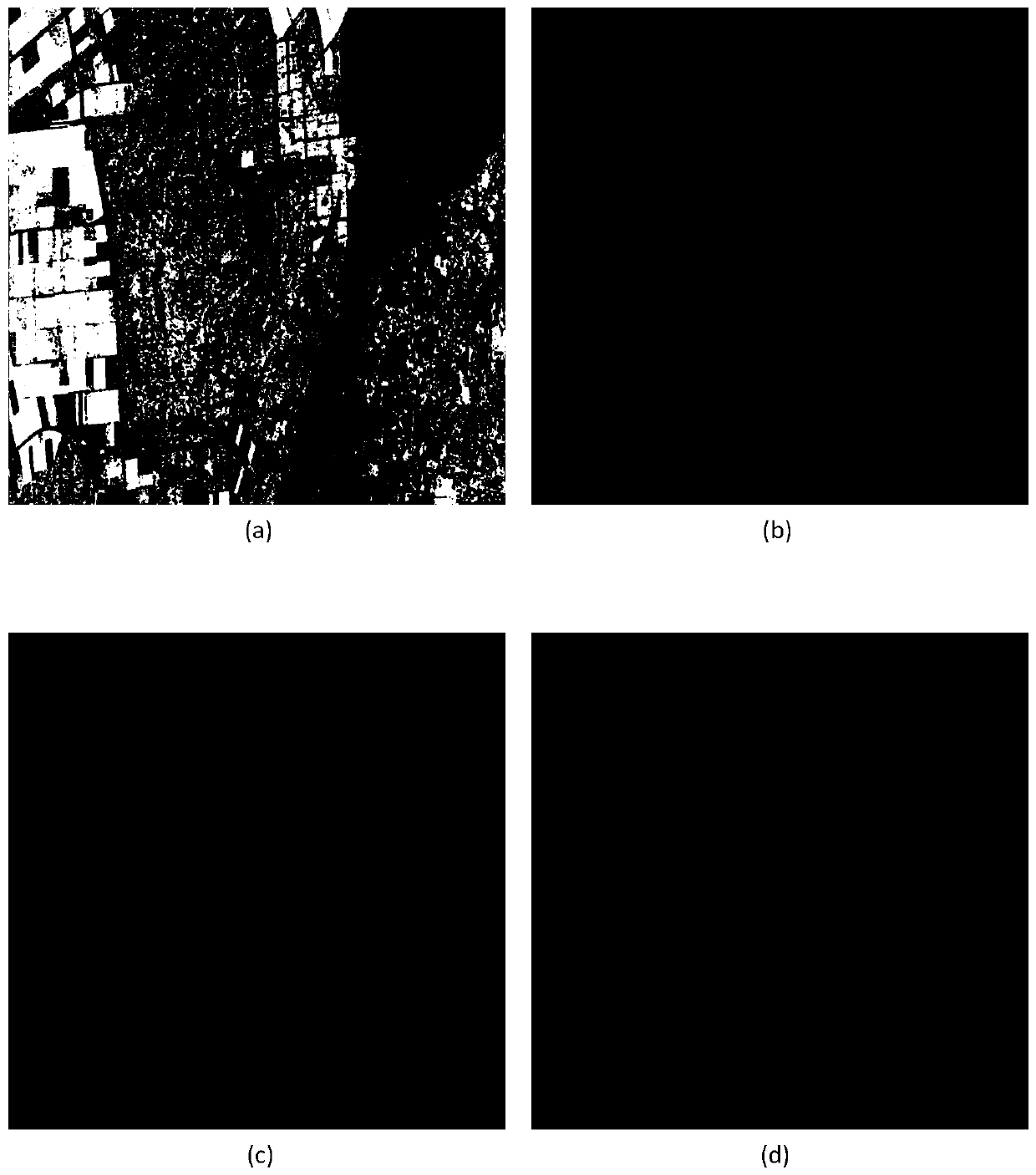Polsar image feature classification method based on dfic superpixels
A ground object classification and superpixel technology, applied in the field of image processing, can solve the problems of poor superpixel segmentation effect, no decomposition features, poor classification effect, etc., to improve the classification accuracy, improve the clarity accuracy, and improve the segmentation effect. Effect
- Summary
- Abstract
- Description
- Claims
- Application Information
AI Technical Summary
Problems solved by technology
Method used
Image
Examples
Embodiment Construction
[0038] The present invention will be further described in detail below with reference to the accompanying drawings.
[0039] Refer to the attached figure 1 The implementation steps of the present invention are further described in detail.
[0040] Step 1. Input a PolSAR image to be classified.
[0041] Step 2. Perform Claude target decomposition.
[0042] The Claude target decomposition is performed on the PolSAR image of the polarimetric synthetic aperture radar, and seven features are obtained. The steps of the Claude target decomposition are as follows:
[0043] Refinement Lee filtering for polarimetric synthetic aperture radar PolSAR images.
[0044] Select a decomposition window of 7 × 7 pixels, decompose the refined Lee-filtered image, and select 7 features that contain all the information of the original PolSAR image from the decomposed feature map: entropy , Anisotropy, Reflection Angle: Alpha, Beta, Gamma, Delta, Lambda.
[0045] Step 3. Initialize superpixels. ...
PUM
 Login to View More
Login to View More Abstract
Description
Claims
Application Information
 Login to View More
Login to View More - R&D
- Intellectual Property
- Life Sciences
- Materials
- Tech Scout
- Unparalleled Data Quality
- Higher Quality Content
- 60% Fewer Hallucinations
Browse by: Latest US Patents, China's latest patents, Technical Efficacy Thesaurus, Application Domain, Technology Topic, Popular Technical Reports.
© 2025 PatSnap. All rights reserved.Legal|Privacy policy|Modern Slavery Act Transparency Statement|Sitemap|About US| Contact US: help@patsnap.com



